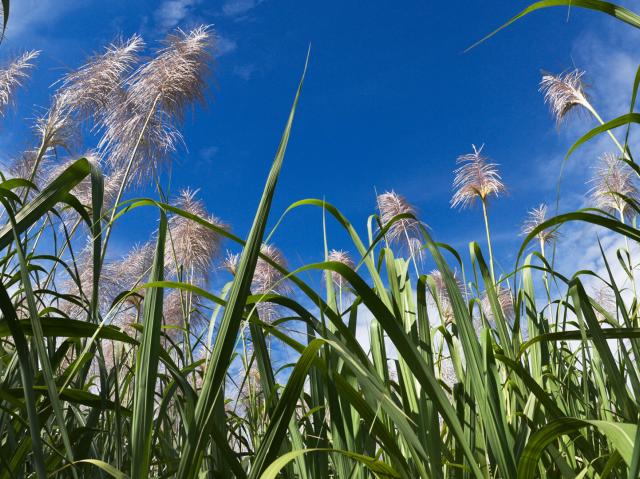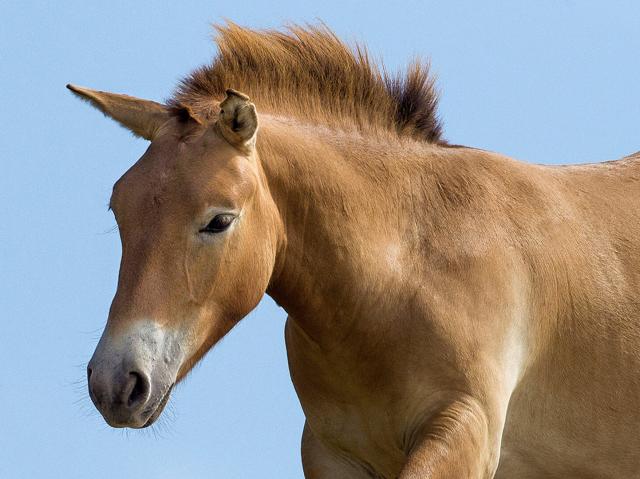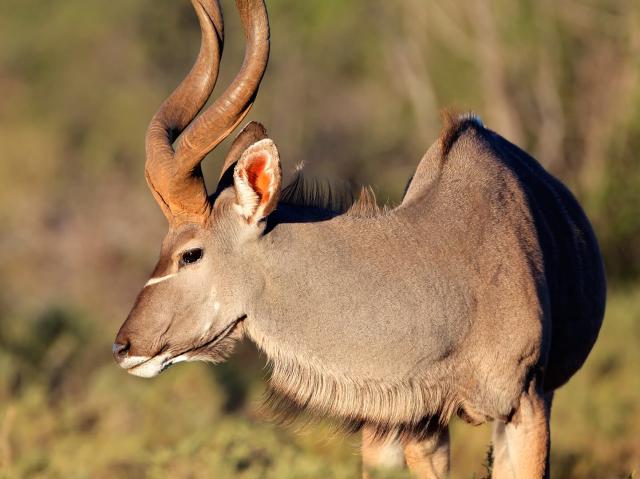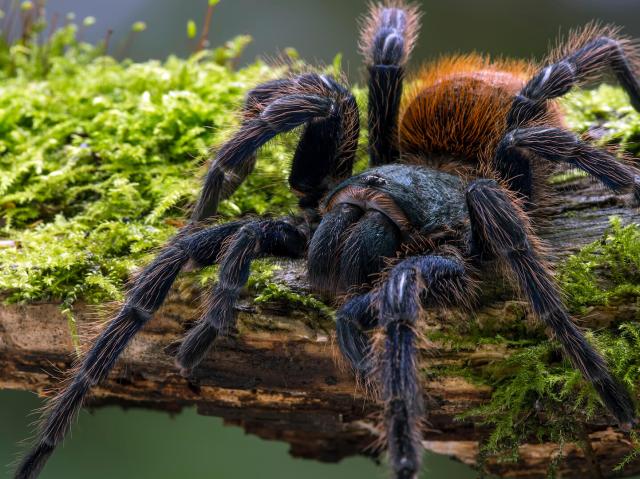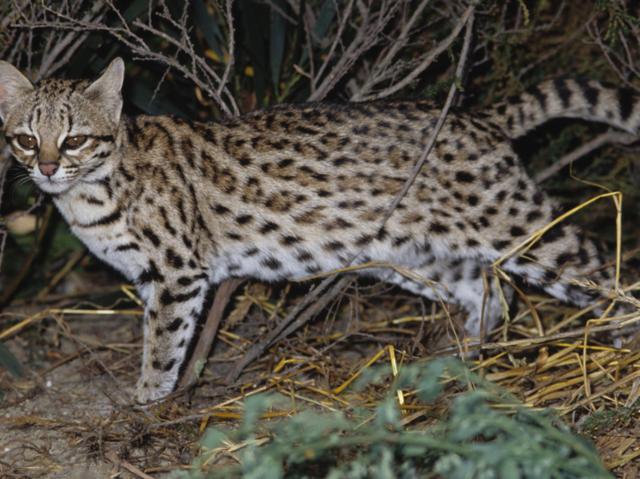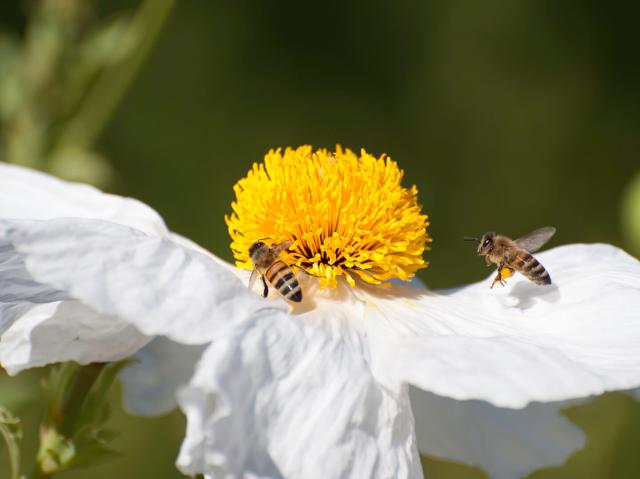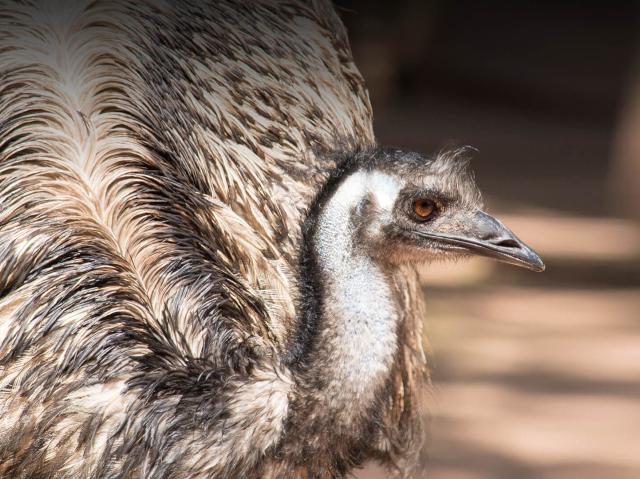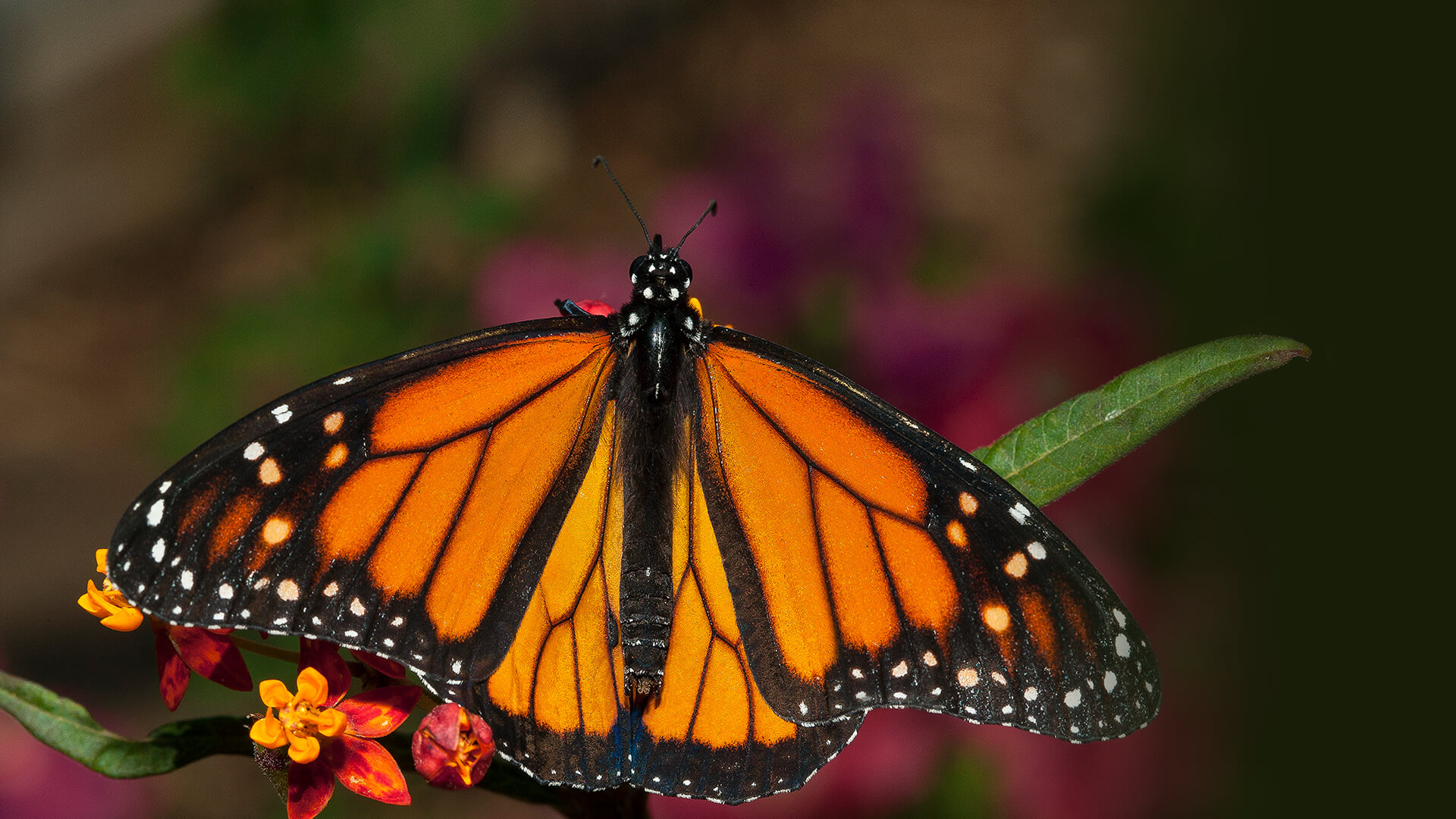
Butterfly, Moth, and Skipper

- Class: Insecta (Insects)
- Order: Lepidoptera
- Families: 124 divided into 2 main groups: Homonuera and Heteroneura
- Species: About 165,000 known species

ABOUT
They taste with their feet and have a suction tube for a mouth. Their eyes are made of 6,000 lenses and can see ultraviolet light. They drink from mud puddles and transform from caterpillars to fluttering adults. These fascinating magicians are Lepidopterans—also known as butterflies, moths, and skippers.
There are about 165,000 known species, found on every continent except Antarctica, and they come in a wide variety of colors and sizes. The largest may reach 12 inches (30 centimeters) across, while the smallest may be only 0.12 inches (0.3 centimeters).
Butterfly or moth? There are ways to tell them apart. Butterflies generally have long, smooth antennae that are rounded on the ends, while most moths have thick, feathery antennae. Moths also tend to have larger, fuzzier bodies than butterflies. Most moths fly at night, while most butterflies fly during the day. Because of when they're active, butterflies tend to be more colorful than moths, but that's not always the case.
You can see another difference when they're resting: most moths flatten their wings out over their bodies, while most butterflies raise them up and against each other. And although both butterflies and moths develop in a chrysalis, most moths also spin a protective cocoon.
Winging it. Do you know what butterfly wings are made of? They're actually pretty complex. The main structure of the wing is made of thin layers of chitin, a protein that also makes up the outer "shell" of the body. These layers are so thin you can see through them. They are covered with thousands of tiny modified hairs called scales that reflect the light, creating the extraordinary colors and patterns we see. These scales are the "dust" that comes off a butterfly wing as it brushes against leaves and flowers.
The wings also contain a system of veins that circulate blood, and strong muscles on the butterfly's body move the wings up and down. The wings actually move in a figure "8" motion that pushes the butterfly through the air. Some seem to shimmer; this is caused by the way that light is reflected off the scales on its wings.
Moth and butterfly wings are very delicate, and can easily rip or tear from the slightest touch. Please look at these amazing creatures with just your eyes, not your fingers. Better yet, catch some luck by letting them land on you!
Quite a commute. Monarch butterflies are famous for their yearly migration, traveling up to 2,000 miles in 2 months to get from Canada and the northern U.S. to Mexico for the winter. Some butterflies that live in cold climates don’t migrate, and instead produce glycerol in their bodies, which acts like “butterfly antifreeze” to keep them alive during the winter.
Butterflies are essentially cold-blooded, and many warm up for flight by sitting in a warm spot or basking in the sun. But some, especially moths, have developed adaptations to raise their body temperature themselves, such as vibrating their wings to warm up the muscles.
Flying fast, high, and far. The fastest butterflies are the skippers, which can fly at 37 miles per hour (60 kilometers per hour), but most butterflies fly at 5 to 12 miles per hour (8 to 20 kilometers per hour). A few can fly at great heights, as much as 10,000 feet (3,050 meters). Some butterflies can also cover long distances, like the monarch butterfly, which can migrate 2,000 miles (3,218 kilometers) or more. Night-flying moths navigate by the moon and the stars, but when that light is not available, moths use magnetic “clues” from the Earth.
Color me cautious. The color of a butterfly can be for protection. The big spots on an owl butterfly look like the eyes of a much larger predator, so a bird may think twice about attacking. Other butterflies are camouflaged to blend into their environment, and some are brightly colored to warn that they are poisonous.
HABITAT AND DIET
Can you taste with your feet? You probably wouldn't want to! But this is one of the ways butterflies tell what plants to lay their eggs on. They have taste sensors on their feet, and by standing on a leaf, they can taste it to see if their caterpillars can eat it.
Most adult Lepidopterans can't bite or chew. They eat mainly liquids like nectar, sap, juices from fruits, and sometimes even fluids from carcasses. They have a long, tube-like tongue called a proboscis, which works like a straw to suck up liquid. When they're not using it, the proboscis stays coiled up like a garden hose. The Morgan's sphinx moth has the longest proboscis, 12 to 14 inches (30 to 35 centimeters), to get the nectar out of a deep orchid.
Lepidopterans are found in every habitat from tropical forests to open grasslands to Arctic tundra and on every continent except Antarctica.
FAMILY LIFE
Life's about change. One of the most incredible things about butterflies is the way they change from crawling caterpillars into winged beauties. This process is called metamorphosis, and it has fascinated and perplexed people for centuries. In fact, scientists still aren't sure exactly how it works! What we do know is that when a caterpillar seals itself into a chrysalis, chemicals are released from its body that change and rearrange all the cells to create the butterfly's new shape, including its wings.
So how does the caterpillar know when it's time to change? Its brain produces a chemical called "juvenile hormone." As long as the level of this hormone in its body is high, it keeps eating, growing, and shedding. But when the hormone level drops, then the caterpillar "knows" that it's time to move on to the next stage.
The egg— An adult female lays her eggs on the right plants for the caterpillars to eat when they hatch from the eggs. Some butterflies lay their eggs on only one type of plant!
The caterpillar— When the egg hatches, a small caterpillar emerges and eats the egg casing. It then starts to eat the plant. Caterpillars are basically munching machines. This is the stage when most of the eating and growing happens, and each time the caterpillar gets too big for its skin, it sheds and starts again.
The metamorphosis— The last time the caterpillar sheds, a hard casing forms around it, called a chrysalis or pupa. Moths add more protection to this—they spin a silky cocoon as well. The magic metamorphosis happens at this stage, and when the butterfly breaks out, it is an adult that can reproduce, fly in search of food, and migrate if necessary. It does need to plump up its wings first, filling them with fluid and then letting them dry and harden.
How long does it take to become a butterfly? Well, it depends. For butterflies in warm climates, the transformation can be completed in 10 to 15 days, depending on the size. Butterflies living in regions with chilly winters may have to wait to emerge until the weather warms up. This is called diapause—it is similar to hibernation and can take place in any part of the life cycle. Some butterflies can wait for several years inside their chrysalis until the conditions are right to emerge!
In addition to making the world a brighter place, butterflies are important pollinators. Along with bees, birds, bats, and some small mammals, butterflies help move pollen from one plant to another. As they flit from flower to flower sipping nectar, pollen grains stick to them. Those grains are the deposited on another blossom, continuing the fertilization cycle.
CONSERVATION
Supporting butterfly farms in Central and South America is an important conservation step. In order to raise butterflies, the farmers designate areas of rainforest for the butterflies to live in. They can then sell the pupae to places like the San Diego Zoo Safari Park’s annual Butterfly Jungle event, bringing in a sustainable income while also protecting the local habitat.
There are more than 165 butterfly species native to Southern California, and some are threatened or endangered. The Quino checkerspot butterfly and the Laguna Mountains skipper are two endangered species that have dwindled to a few sparse colonies around San Diego County, largely due to agricultural and urban development. We are helping these populations recover.
By supporting San Diego Zoo Wildlife Alliance, you are our ally in saving and protecting wildlife worldwide.
LIFE SPAN
2 weeks to 2 months for most butterflies; longest is 9 to 12 months for the migrating monarch butterfly
YOUNG
Eggs: Varies from a few to thousands
Egg size: Usually 0.1 inches (3 millimeters) or less
Development: Varies widely among species, but typically several days for eggs to hatch, 2 to 4 weeks as a caterpillar, and 1 week to over 2 months in pupa form. Some take 7 years to accomplish this!
SIZE
Largest: Atlas moth with a 12 inch (30.5 centimeters) wingspan
Smallest: Leaf minor moth at 0.12 inches (0.3 centimeters) across
FUN FACTS
In some places, the number of caterpillars feeding on plants is so large that you can actually hear them munching.
Many adult butterflies never excrete waste—they use up all they eat for energy.
The Asian vampire moth lives up to its name! It has a tough proboscis to break through thick-skinned fruits, but sometimes it also sucks the blood of water buffalo or deer.
"Puddle clubs" are groups of butterflies that gather at mud puddles and wet soil to suck up salts and minerals.
Butterflies can see red, green, and yellow, but they also see color in the ultraviolet range, which reveals patterns on flowers—and other butterflies—that we can't see.
Some Arctic moths may spend 14 years as caterpillars, only active a few weeks each summer.
Butterfly wings are actually clear—the colors and patterns we see are made by the reflection of the tiny scales covering them.
Skipper butterflies fly so fast they could outpace a horse.
Flowering weeds are a staple nectar and pollen source for butterflies.
Most people have no idea that the sustainability of food as we know it is so tightly linked with the health of pollinators like bees, butterflies, and beetles. Share what you know!
Plant some native milkweed and flowers. Create a habitat in your yard, garden, or flowerbox that invites pollinators.



